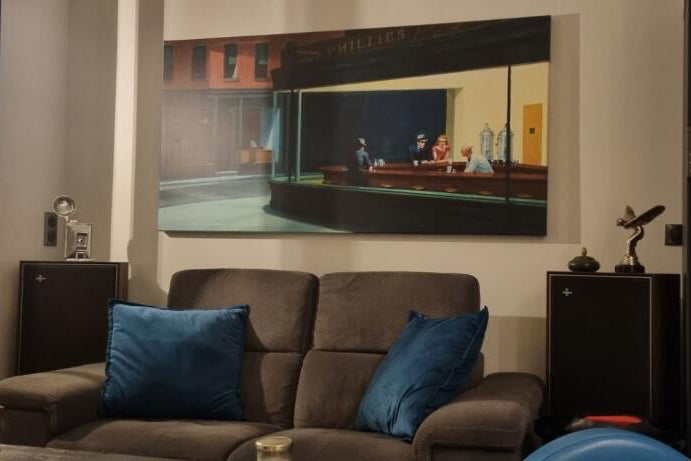Art print | Two floating angels - Johann von Schraudolph


View from behind

Frame (optional)
In the fascinating universe of 19th-century religious art, the artwork "Two floating angels" by Johann von Schraudolph stands as a true ode to spirituality and the elevation of the soul. This painting, imbued with softness and serenity, invites the viewer to immerse themselves in a world where the divine and the human meet. The angels, emblematic figures of faith, seem to float with an ethereal grace, embodying hope and protection. The art print of this piece allows for rediscovering the magic of angelic representation, while offering a window into the artist's imagination.
Style and uniqueness of the artwork
The uniqueness of "Two floating angels" lies in how Johann von Schraudolph captured the very essence of the angelic. The finesse of details, the brightness of pastel tones, and the delicacy of expressions give each figure an almost lifelike dimension. The faces of the angels, with gentle and soothing features, exude a serenity that calms the mind. The composition, balanced and harmonious, evokes an almost tangible lightness, as if the angels are truly ascending towards the heavens. Light plays a crucial role in this piece, creating soft shadows that enhance the three-dimensionality of the figures, while adding a spiritual depth. Schraudolph thus manages to transcend the simple angelic portrait, offering a visual experience that touches the soul.
The artist and his influence
Johann von Schraudolph, a painter of German origin, marked his era with his unique approach to religious art. Trained in the academic traditions of his time, he skillfully combined classical techniques with personal inspirations to create works of great emotional depth. Influenced by the masters of the Renaissance and Baroque, Schraudolph reinterpreted traditional themes with a modern sensitivity. His work had a significant impact on religious painting, inviting his contemporaries to rediscover the beauty and spirituality of sacred subjects. Through works like "Two floating angels," he established a dialogue between the past and the present.

Matte finish

View from behind

Frame (optional)
In the fascinating universe of 19th-century religious art, the artwork "Two floating angels" by Johann von Schraudolph stands as a true ode to spirituality and the elevation of the soul. This painting, imbued with softness and serenity, invites the viewer to immerse themselves in a world where the divine and the human meet. The angels, emblematic figures of faith, seem to float with an ethereal grace, embodying hope and protection. The art print of this piece allows for rediscovering the magic of angelic representation, while offering a window into the artist's imagination.
Style and uniqueness of the artwork
The uniqueness of "Two floating angels" lies in how Johann von Schraudolph captured the very essence of the angelic. The finesse of details, the brightness of pastel tones, and the delicacy of expressions give each figure an almost lifelike dimension. The faces of the angels, with gentle and soothing features, exude a serenity that calms the mind. The composition, balanced and harmonious, evokes an almost tangible lightness, as if the angels are truly ascending towards the heavens. Light plays a crucial role in this piece, creating soft shadows that enhance the three-dimensionality of the figures, while adding a spiritual depth. Schraudolph thus manages to transcend the simple angelic portrait, offering a visual experience that touches the soul.
The artist and his influence
Johann von Schraudolph, a painter of German origin, marked his era with his unique approach to religious art. Trained in the academic traditions of his time, he skillfully combined classical techniques with personal inspirations to create works of great emotional depth. Influenced by the masters of the Renaissance and Baroque, Schraudolph reinterpreted traditional themes with a modern sensitivity. His work had a significant impact on religious painting, inviting his contemporaries to rediscover the beauty and spirituality of sacred subjects. Through works like "Two floating angels," he established a dialogue between the past and the present.










